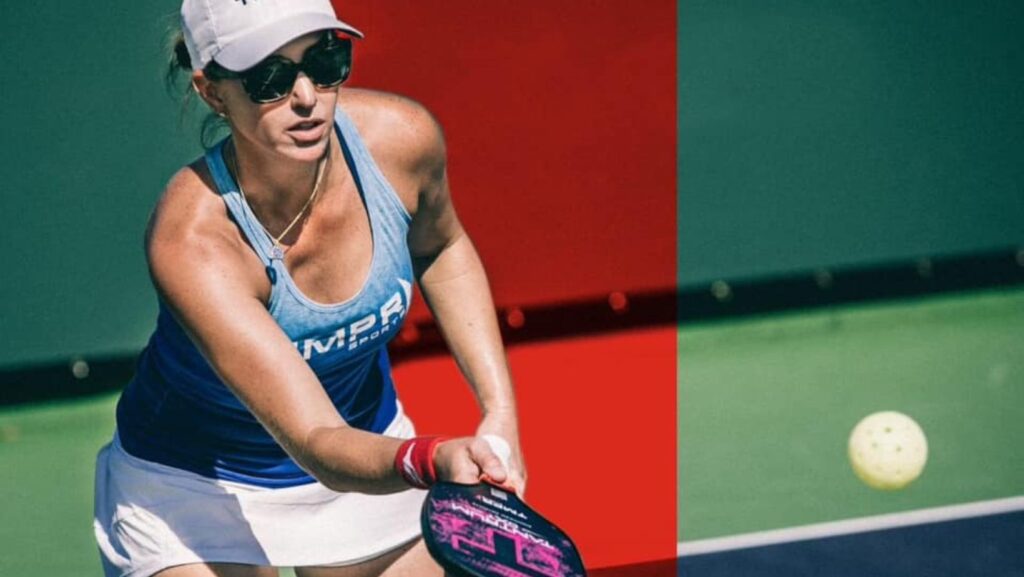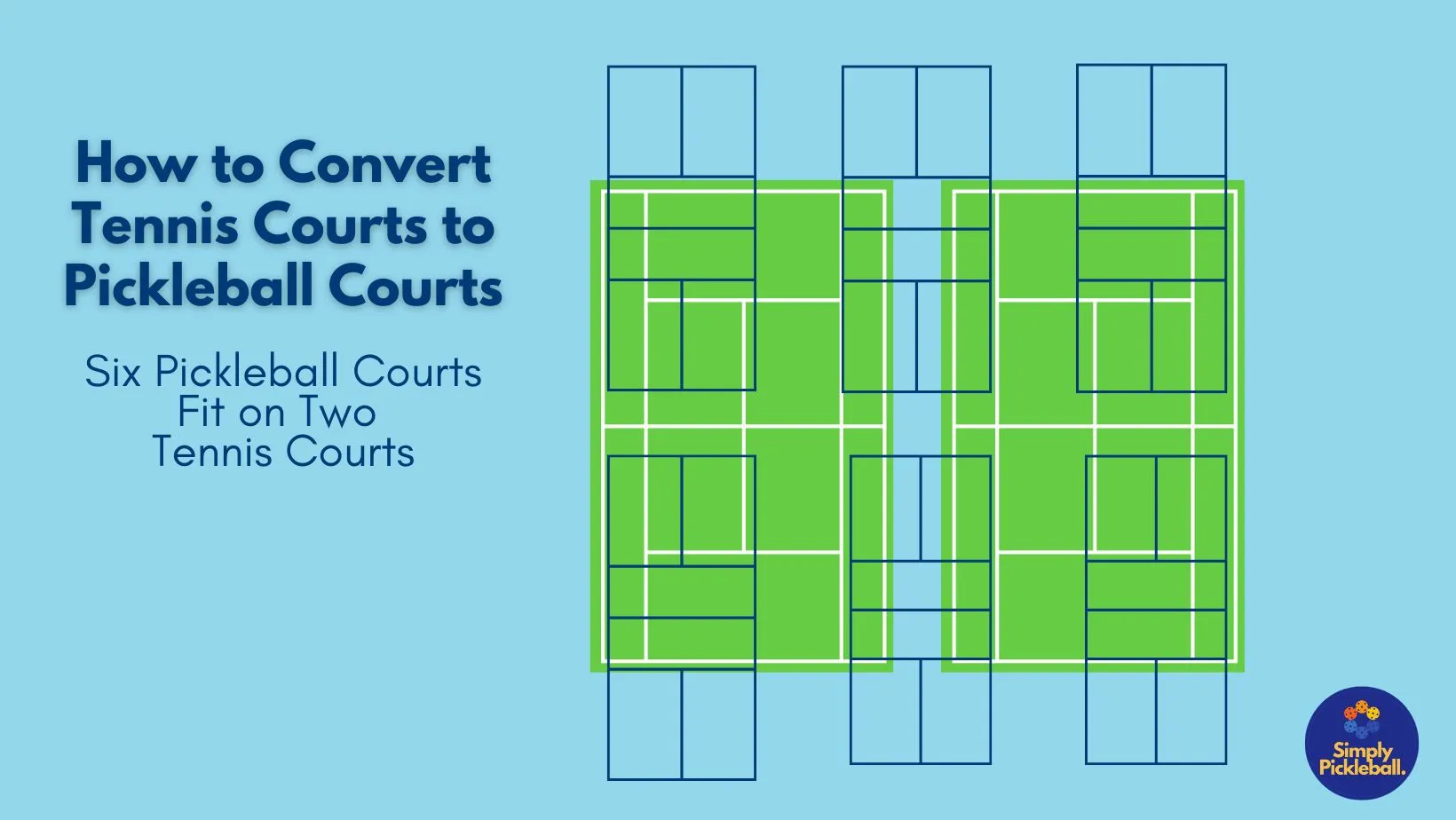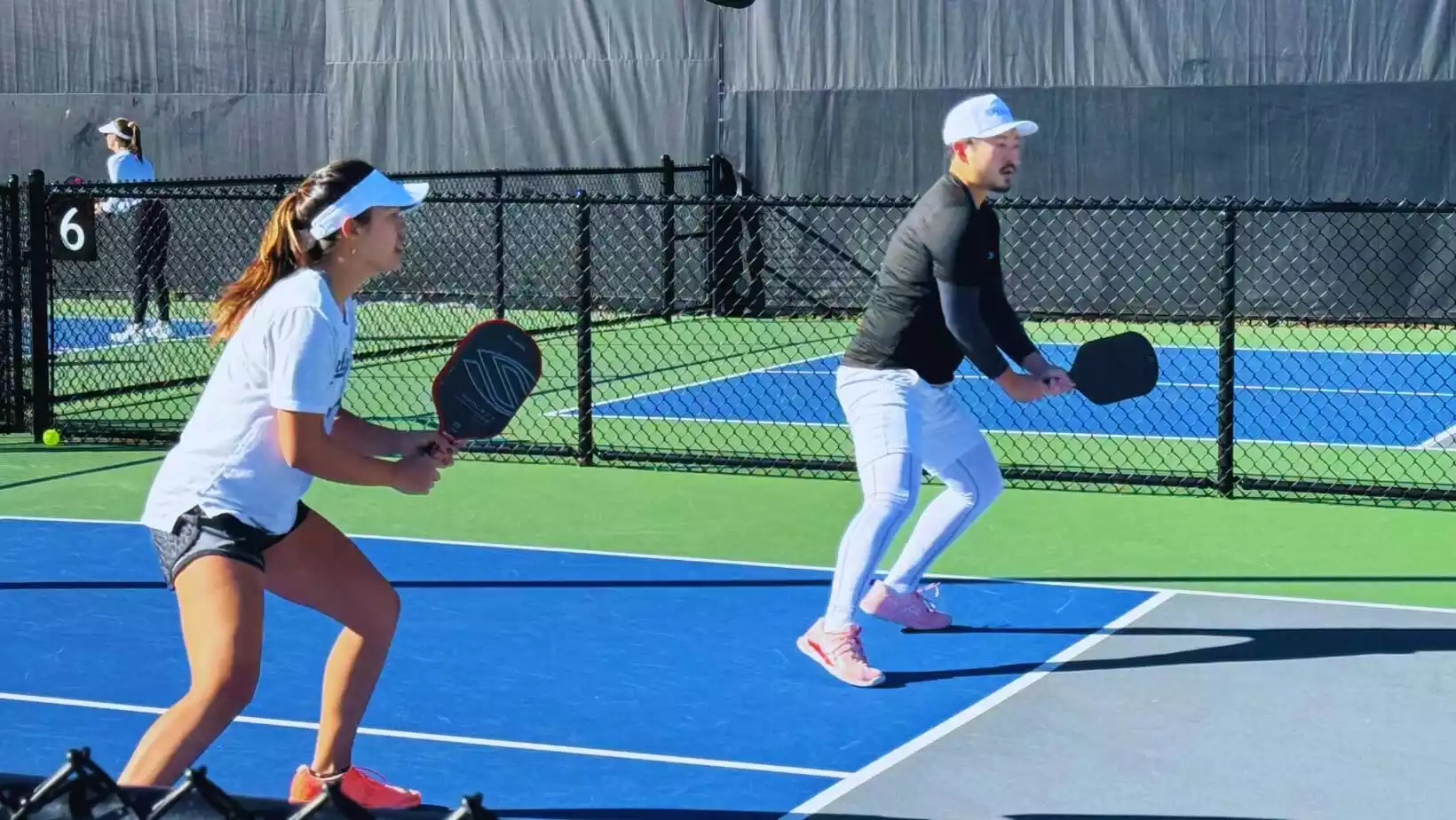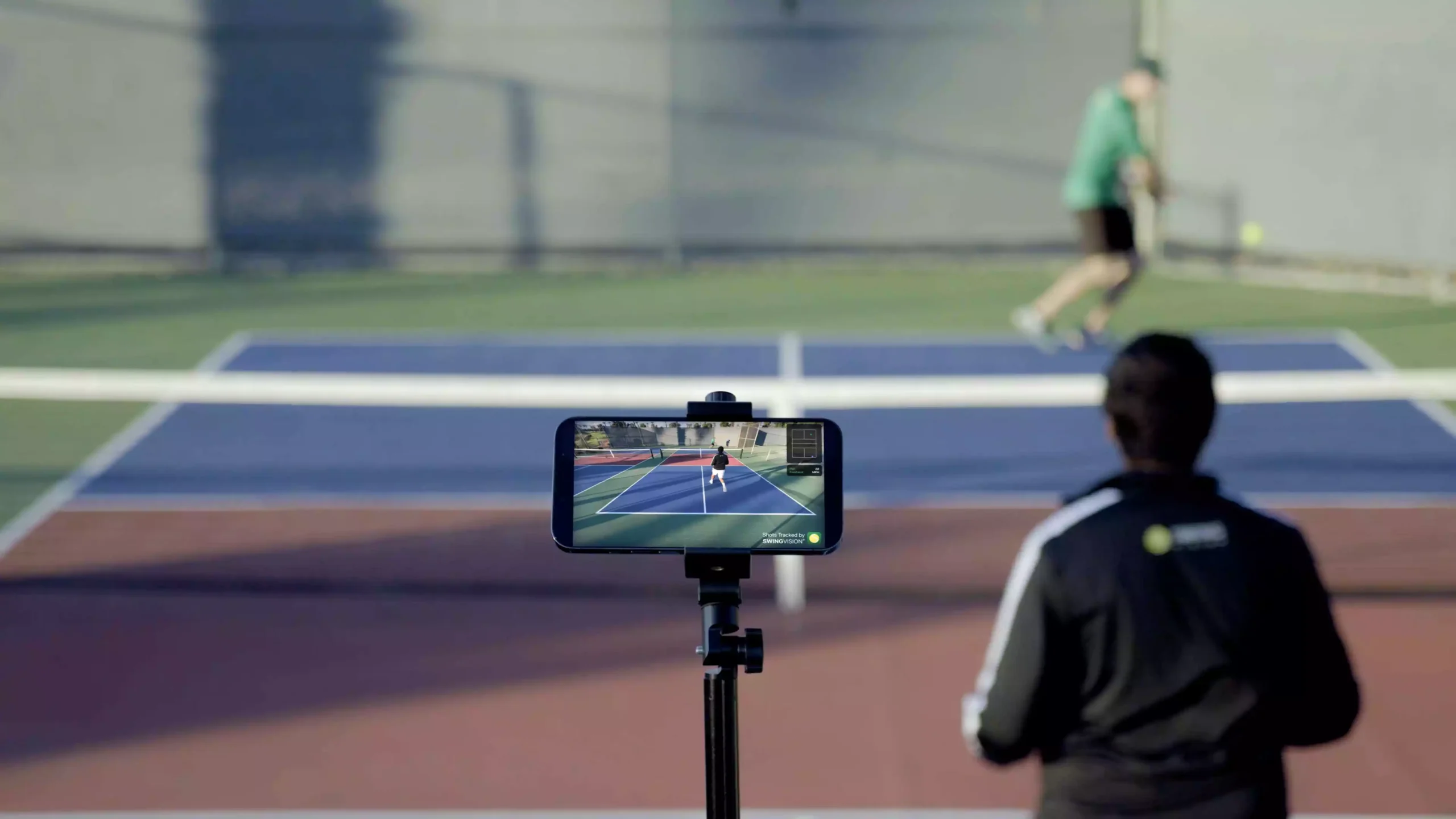Struggling to master pickleball skinny singles? This condensed version of pickleball hones your precision and strategy with its slimmed-down court. Skip the broad strokes and learn essential rules, tactics, and training tips that capitalize on the unique demands of skinny singles. Refine your game and edge out the competition with every serve and return.
Key Takeaways
Pickleball skinny singles is a narrower version of regular pickleball that’s great for precision, strategy, and players of all levels due to less ground to cover.
The game has unique rules like serving cross-court based on your score and staying out of the kitchen for volleys, all while using a scoring system similar to singles pickleball.
Top strategies include mixing up shots, effective footwork, controlling the non-volley zone, and using angled shots and serves to exploit your opponent’s weaknesses.
The Basics of Pickleball Skinny Singles

Pickleball skinny singles is a captivating variation of the traditional pickleball game. The court is narrowed, using only the middle third, which transforms the game dynamic and heavily emphasizes precision and strategy. If you want to challenge yourself, it’s time to play skinny singles.
Compared to the full-width singles game, skinny singles offers the following advantages:
Requires less ground to cover, making the game more accessible for a broader range of players
The court can be split along the centerline or using the diagonal service courts, adding a strategic element to the game
Excellent for leisurely competition or training-specific skills due to its versatile and narrowed playing area.
Court Dimensions and Setup
The pickleball skinny singles court is a smaller version of the standard court, designed for a different style of play. It allows for faster movement and more strategic positioning. It measures 20 feet in width, compared to the usual 44 feet of a regular pickleball court. In this game, each player is responsible for covering approximately 10 feet, half the court, on their side. This unique setup impacts the shots and strategies used in gameplay.
In skinny singles, the center line acts as a sideline, meaning players have to utilize only half of the court. The game can be played straight on or crosscourt, adding a layer of complexity and strategic depth to the game.
Key Differences Between Skinny Singles and Traditional Pickleball
Skinny singles brings a fresh twist to the traditional pickleball game, introducing the concept of the skinny singles court. One notable difference is that players must hit the ball cross-court into the opponent’s half of the court, and subsequent shots must continue to be played cross-court.
Skinny singles adopts a serving pattern akin to traditional singles play. Whenever a point is won, serving sides are alternated. However, despite these differences, the scoring and player expectations in skinny singles remain consistent with the traditional singles and doubles pickleball games.
Essential Rules for Playing Skinny Singles

Understanding the unique rules of skinny singles is vital for optimizing your gameplay. The server must serve diagonally across the net to the opponent’s service court, standing behind the baseline. The scoring system follows the same format as standard singles pickleball, with the serving player’s score announced first.
Skinny singles also presents some unique rules to the game. Players must switch to the odd and even sides of their court based on their score, with even scores requiring service or return from the right-hand side, and odd scores from the left-hand side. Like traditional pickleball, skinny singles also maintains the kitchen rules. Players are not allowed to volley within the kitchen zone and must wait for the ball to bounce before hitting it if they’re within this zone.
Serving in Skinny Singles
The act of serving in skinny singles is considered an art. Unlike doubles play where each team member serves consecutively, in skinny singles, players serve until a fault; service then goes to the opponent. The server must also be mindful of their score as it determines the side from which they serve. An even score requires serving from the right side and an odd score from the left, with side-switching occurring after every point scored.
In addition, the serve in skinny singles is required to clear the non-volley zone and land within the bounds of the opponent’s service court. The initial serve of the game is delivered from the right side of the court. A fault occurs if there’s incorrect alignment of the serving side with the score or if a serve lands in the kitchen. Serving from near the centerline can help cover the court more effectively and respond to returns.
Scoring System
The scoring system in skinny singles is as follows:
Players compete to reach 11 points
However, a player needs to have a lead of at least 2 points in order to win the match
The server’s own score determines the side of service: an even score requires serving from the right side and an odd score from the left side.
The scoring call in singles pickleball, which uses rally scoring, follows a certain order. The server’s score is called first followed by the receiver’s score. If a server serves from the wrong side in relation to their score, it is a fault which results in the opponent gaining the serve.
Top Strategies for Winning at Pickleball Skinny Singles

Strategic thinking and precision are fundamental to excel in skinny singles pickleball. The reduced width of the court demands a focus on these elements. Mixing down-the-line shots with traditional cross-court play can result in a more dynamic and unpredictable game, keeping your opponent on their toes.
Effective footwork is another crucial strategy. Moving and following the shot is essential in skinny singles to limit the opponent’s angles. Additionally, mastering ATP (around-the-post) shots can provide a defensive counter to challenging plays, adding a new dimension to your game.
Maximizing Your Serve
In skinny singles, the serve is not just a rally starter; it serves as a strategic weapon as well. By targeting the opponent’s weaker side, especially the backhand, you can gain an advantage right from the start. Deep serves push the opponent back, making it harder for them to take control of the net and forcing more difficult returns.
Varying the serve’s direction while ensuring it is delivered deep and with good pace can unsettle the opponent and create pressure during the initial play. A vital drill for mastering skinny singles play includes practicing strong serves that target the opponent’s weaker side and landing deep in the service box.
Controlling the Kitchen Line
In pickleball skinny singles, the kitchen line holds strategic importance. Establishing control at the Non-Volley Zone Line is crucial to dominate the gameplay. Getting to the Non-Volley Zone Line quickly increases your chances of winning points.
Once you’ve hit your shot, your immediate goal should be to move to the Kitchen Line to assume a strategic position. Practicing this rapid advance to the Kitchen Line after both serving and returning can help you gain control of the net and the game.
Exploiting Angles and Cross-Court Dinking

Utilizing angles strategically is a requirement in pickleball skinny singles as they serve as crucial assets in this style of play. Angle awareness and execution are key skills for success in this game. By creating winning shots and taking advantage of opponent positioning, exploiting angles can lead to potential winners. Practicing angled passing shots can force the opponent to move laterally and potentially reach for the ball, creating opportunities for errors or winning shots.
When engaged in a crosscourt dinking battle in skinny singles, exploiting angles can lead to potential winners, especially if the opponent is pinned to the sideline and a ball is pushed up the middle behind them. Following each shot and moving feet accordingly can prevent giving the opponent advantageous angles during the rally. However, remember that using sharp cross-court dinks may lead to easy rally-ending ATP opportunities for the opponent if not selected properly.
Advanced Techniques for Skinny Singles Success
Incorporating a few advanced techniques can elevate your skinny singles game to the next level. Mastering lobs can leverage the court’s angles to move the opponent and create opportunities for offensive shots. Effective down-the-line drives can constrain the opponent’s return angles and can be used strategically to win points directly.
Utilizing cross-court dinks and serve cross court techniques allow players to exploit angles, apply pressure, and open up the court in skinny singles play.
Mastering the Lob
In skinny singles, a well-executed lob can be a powerful tool. By aiming deep in the court and targeting the opponent’s weaker backhand side, you can force a less effective return. A lob is particularly effective against opponents who exhibit weaknesses in their overhead shots or overall mobility.
By using a lob, you can:
Force the opponent to move away from the Kitchen Line, thereby opening the court for more aggressive offensive play
Provide the necessary time to gain a better court position if advancing to the Kitchen Line is challenging
Refine the skill for strategic application during match play, with an emphasis on targeting the opponent’s backhand
Practicing lobs will help you improve your game and give you an advantage on the court.
Around-the-Post Shots
Around-the-post (ATP) shots add another layer of complexity to the game. These shots are permitted in skinny singles play and are not required to go cross-court into the appropriate half of the opponent’s court. The ATP shot can be a game-changer, opening up new angles and opportunities to win points.
Down-the-Line Practice
Practicing down-the-line shots in skinny singles compels players to enhance their court movement and improve the precision and placement of their shots. This focused practice helps in simulating the dynamics of a real game, aiding players in refining their down-the-line play during competitive matches.
Incorporating Skinny Singles into Your Pickleball Routine
Integrating skinny singles into your pickleball routine can significantly enhance your overall game performance. This format provides opportunities to work on skills that enhance overall pickleball techniques, making it particularly valuable for doubles play, including the doubles game.
Skinny singles play allows for intense focus on shot placement, leading to increased accuracy in game situations. Participating in skinny singles ensures that a player is involved in every shot, enhancing strategic thinking and execution under game conditions.
Drills and Warm-Up Exercises
A proper warm-up is necessary before getting into a game of skinny singles. Starting with general exercises such as jogging, stationary cycling, or jumping jacks can raise your heart rate and warm up your body. To activate key muscle groups like the core, hamstrings, hips, shoulders, and upper back, exercises such as the inchworm, leg swings, and arm circles are recommended.
Dynamic exercises like forward lunges with rotation and lateral lunges can prepare your body for the agility needed in singles pickleball. These exercises emphasize coordination and side-to-side movement capabilities. Finally, incorporating foam rolling into the warm-up routine can provide massage-like benefits to the muscles, improving flexibility and potentially reducing post-match soreness.
Preparing for Tournaments with Skinny Singles
As skinny singles evolves into a more advanced and organized game, it’s finding its place in tournament play. Skinny singles is gaining popularity as a competitive game, with tournaments and leagues hosted by clubs and event organizers. Playing skinny singles allows players to concentrate on shot placement and preparedness, making it a valuable warm-up exercise before tournament matches.
As skinny singles becomes more prevalent, mastering specific strategies and drills for this variation is key for tournament preparation.
Summary
Pickleball skinny singles offer a unique twist to the traditional game. With its compact court and unique rules, it emphasizes precision, strategy, and quick decision-making. Whether you’re a seasoned player or a newcomer, incorporating skinny singles into your routine can enhance your overall techniques, shot placement, and strategic thinking. So grab your paddle, step onto the court, and immerse yourself in the thrilling world of skinny singles pickleball.
Frequently Asked Questions
What are the dimensions of skinny singles?
The dimensions of a skinny singles playing surface are 15 feet by 30 feet, making it smaller than the playing surface for slender singles.
Where should you stand in singles pickleball?
You should stand behind the baseline when serving in singles pickleball. The server serves from the right court when their score is even, and from the left court when the score is odd.
Is there a two bounce rule in singles pickleball?
Yes, there is a two bounce rule in singles pickleball. The serve must bounce before the opponent can return it and the return must bounce before the server can return it. Have fun playing!
How do you play pickleball singles with 2 players?
To play pickleball singles with two players, the first serve for each player is done on the right-hand side, and if the server wins the first serve, they switch to the left-hand side until they fault.
How wide is a skinny singles pickleball court?
A skinny singles pickleball court is 20 feet wide, while a regular pickleball court is 44 feet wide. This allows for a more tailored and challenging playing experience for singles matches.
Join thousands of fellow pickleball players from around the world. Subscribe today!








